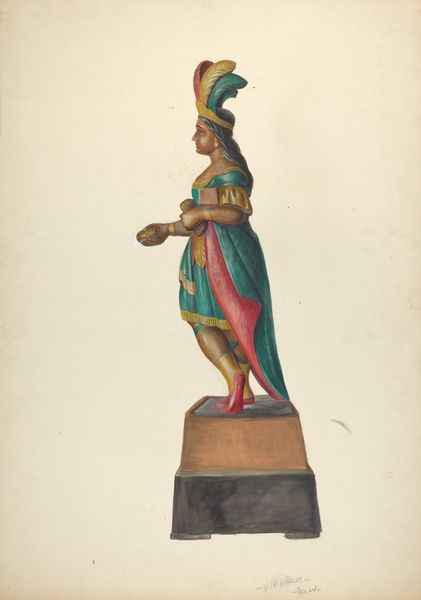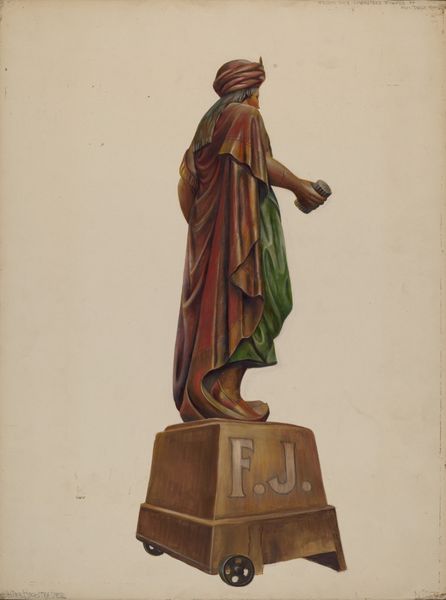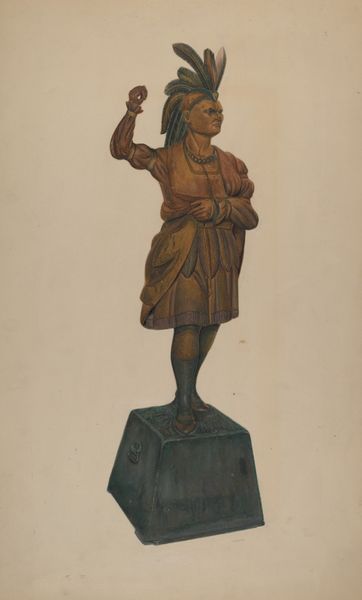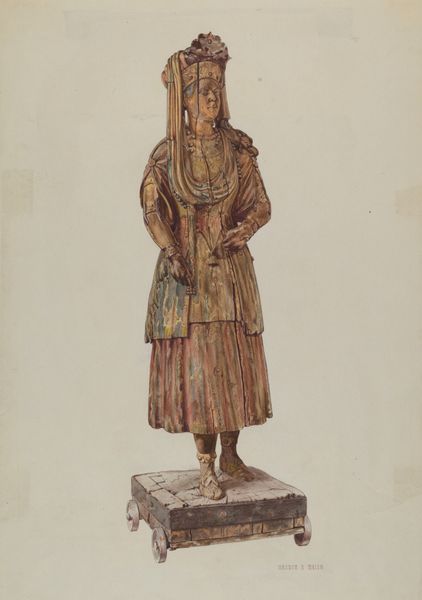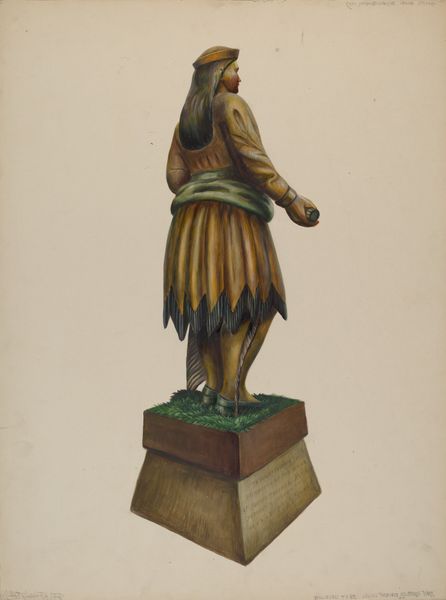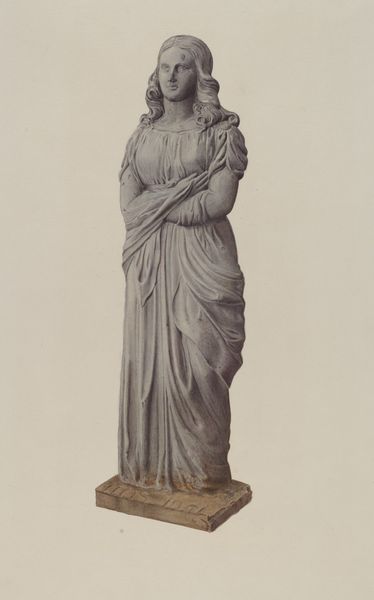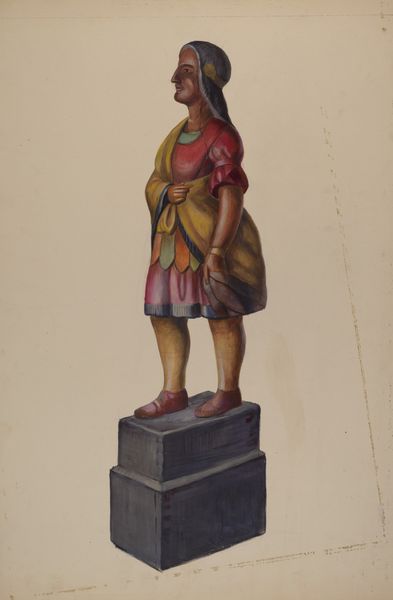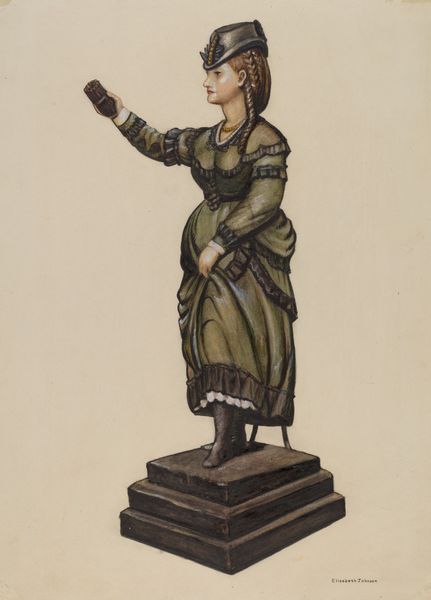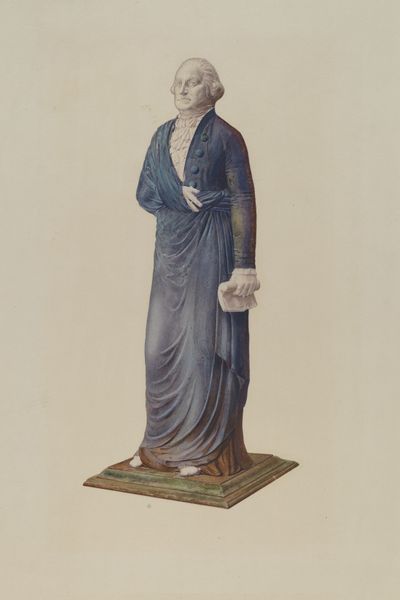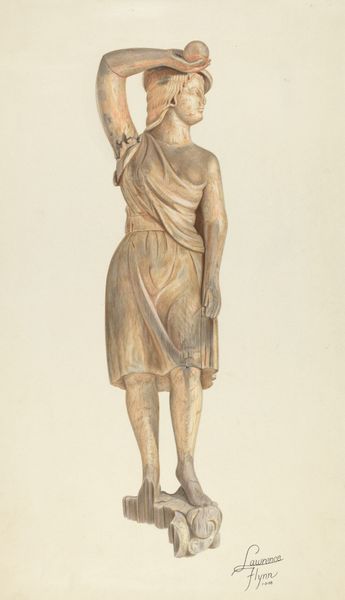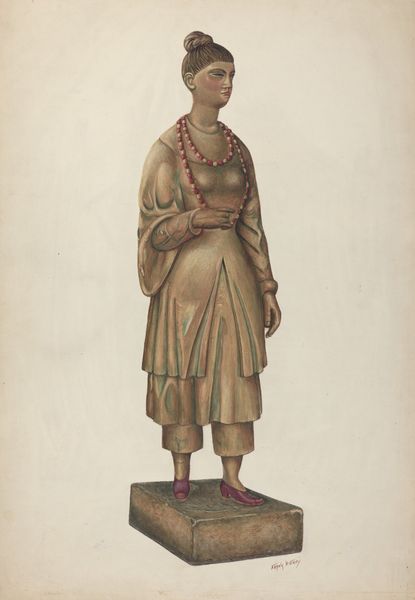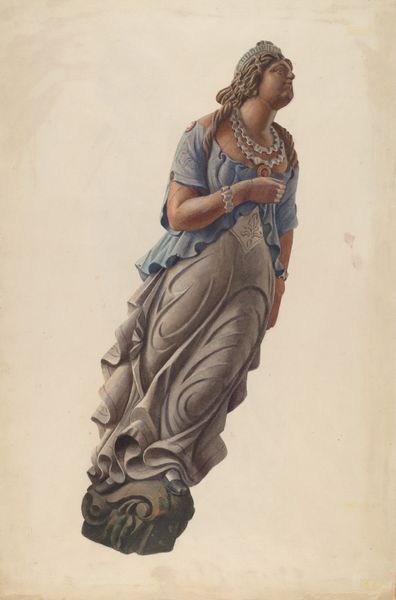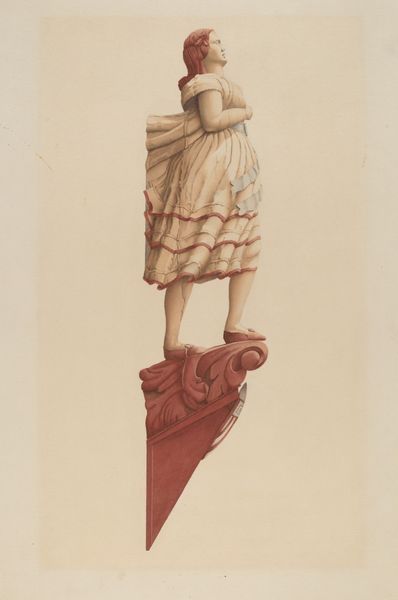
drawing, watercolor, sculpture
#
drawing
#
caricature
#
figuration
#
watercolor
#
sculpture
#
watercolour illustration
#
history-painting
#
academic-art
#
portrait art
#
watercolor
Dimensions: overall: 53.7 x 35.5 cm (21 1/8 x 14 in.)
Copyright: National Gallery of Art: CC0 1.0
Curator: Well, here we have Louis Plogsted’s "Cigar Store Indian," created in 1938 using watercolor. Quite a compelling, if problematic, piece, capturing the visual vernacular of its time. Editor: I must say, my first impression is of quiet melancholy. The soft hues and gentle linework soften what I'd imagine is quite a forceful symbol in its original form. She seems almost… wistful. Curator: Absolutely. What’s crucial to understand is how these figures functioned within a specific economic context. Mass-produced and relatively inexpensive, these wooden sculptures advertised tobacco shops, employing the image of the "Indian" as an exotic signifier to attract customers. Editor: Right, it's advertising as appropriation. This watercolor version almost feels like a commentary *on* the original object, rather than a simple representation. Like a memory of a thing, fading slightly. There's a strange reverence mixed with critique here, wouldn't you say? The softness of the watercolour almost lends an innocence back. Curator: It’s a delicate interpretation that certainly prompts consideration. The act of replicating this mass-produced object using the traditional art medium of watercolor elevates it, perhaps unintentionally, sparking dialogue around authenticity, commodification, and the representation of Native American identity within mainstream commercial culture. We also see her perched atop this base with what appear to be wheels, an absurdity within itself as you imagine these bulky sculptures aimlessly moving on city streets. Editor: And that elevation you mention really does re-contextualize things. Makes me think about the labour of it all, too. The original carving, versus Plogsted’s hand-rendering of it. A sort of meta-commentary on craft and industry. Curator: Precisely! We are encouraged to unpack not just the history of this particular piece, but its status as an artistic iteration within a longer, much thornier trajectory of representation and commerce. Editor: Yes, absolutely. It's both beautiful and a bit heartbreaking. You walk away considering a great deal about how we build stories and objects from loaded material, and how easy it is to lose your own identity inside of that construct. Curator: Well said, and a fitting sentiment for our audience to carry forward, prompting further reflection upon the intricate dialogue between art, industry, and cultural heritage.
Comments
No comments
Be the first to comment and join the conversation on the ultimate creative platform.
